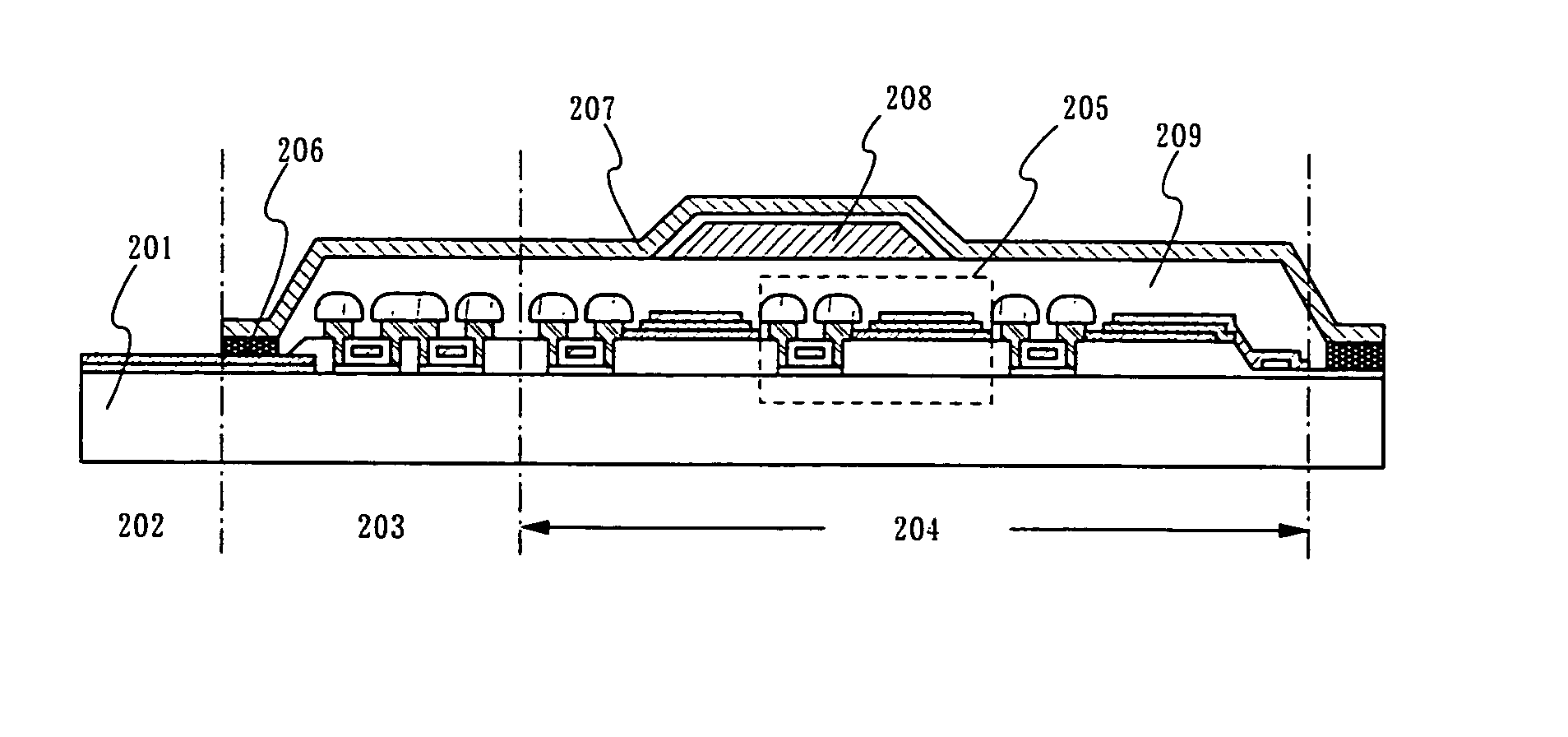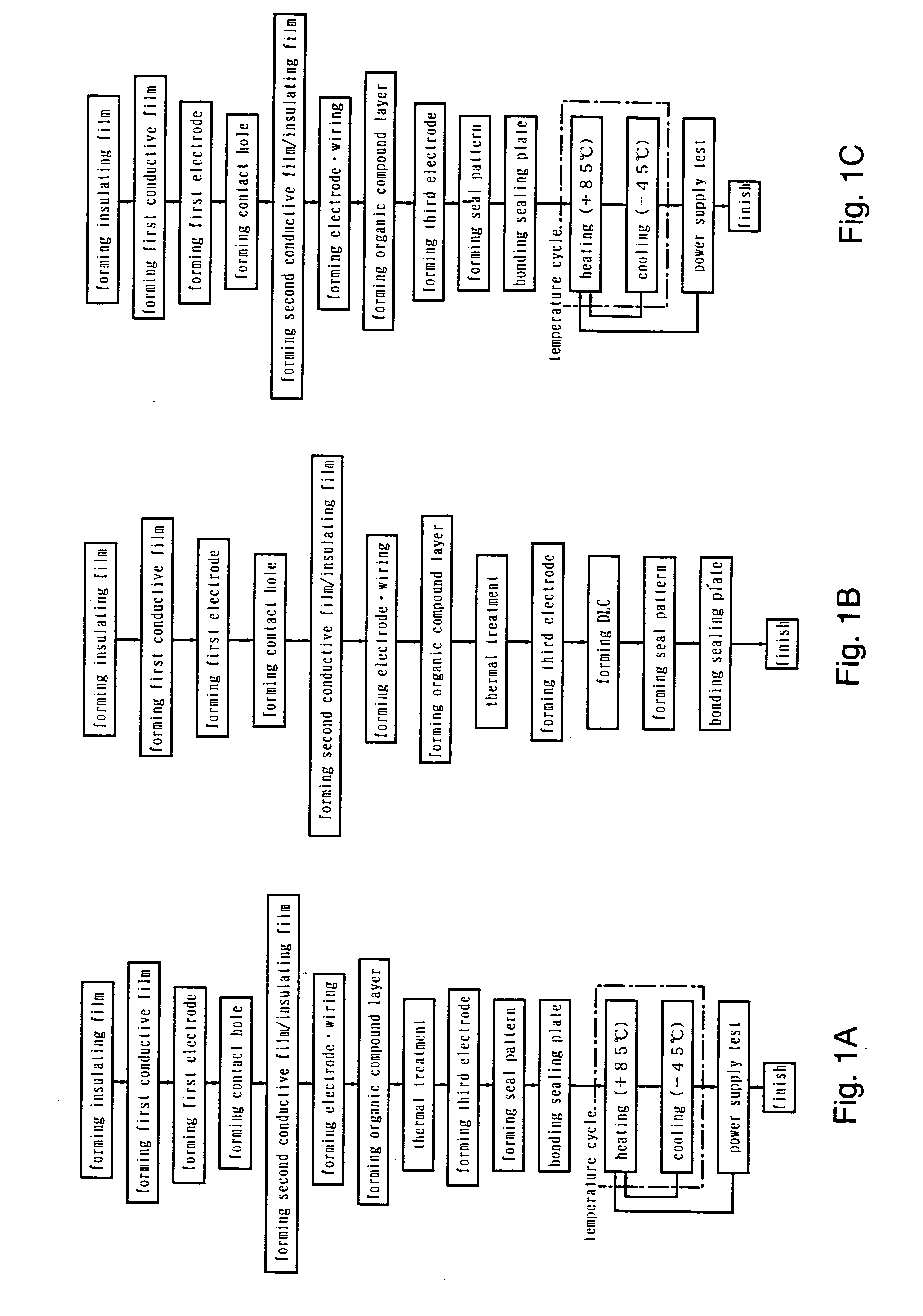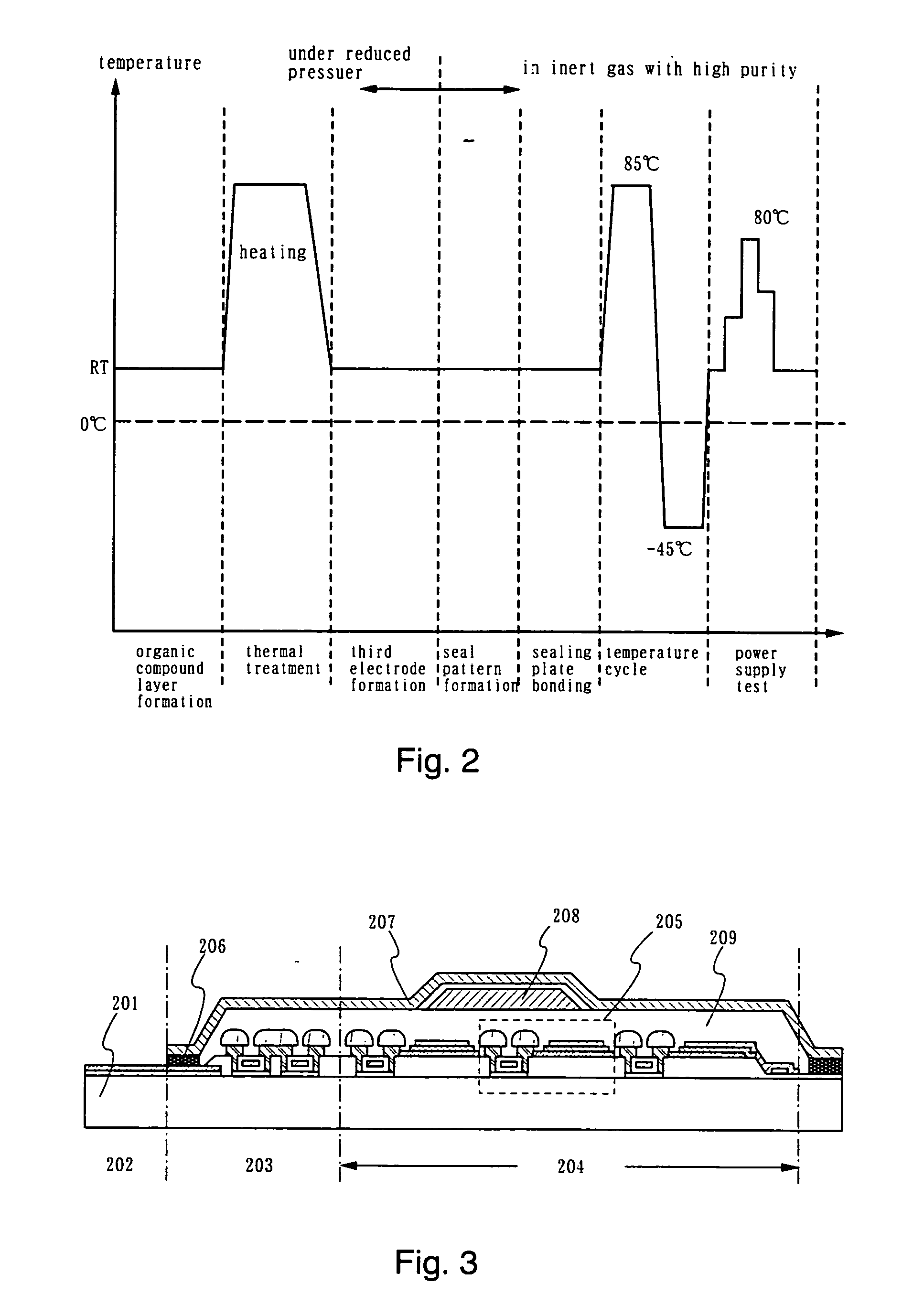Light emitting device and method of manufacturing the same
a technology of light emitting device and manufacturing method, which is applied in the direction of semiconductor devices, basic electric elements, electrical apparatus, etc., can solve the problems of deterioration phenomenon, reduced light emitting intensity, and structural defect, and achieve the effect of reducing the intensity of light emitting with the passage of tim
- Summary
- Abstract
- Description
- Claims
- Application Information
AI Technical Summary
Problems solved by technology
Method used
Image
Examples
embodiment 2
[0098] Another structure of the organic light emitting element described using FIGS. 8A to 8C in Embodiment 1 will be described with reference to FIG. 9. A seventh insulating film is formed after the formation of the anode 411. This insulating film is made of silicon oxide or silicon nitride. After that, the seventh insulating film located on the anode 411 is removed by etching. At this time, as shown in FIG. 9, end portions of the anode 411 is overlapped with the seventh insulating film. Thus, a pattern-formed seventh insulating film 440 is obtained.
[0099] Later processes are performed as in the case of Embodiment 1 to form the connection electrode 415, the insulating film 419, and the like. The organic compound layer 424 and the cathode 425 are formed as shown in FIG. 9. When the seventh insulating film 440 is provided, it can be prevented that the cathode 425 is in contact with the anode 411 in the end portions and a short circuit is caused.
[0100] Of course, even in the case of t...
embodiment 3
[0101] One example of a top gate TFT is described in Embodiment 1. However, even when a bottom gate TFT or an inverse stagger TFT is used, the switching TFT 430 and the current control TFT 432 can be formed as in the case of Embodiment 1. In addition, the light emitting device can be manufactured as in the case of Embodiment 1.
embodiment 4
[0102] With respect to the organic light emitting element applied in the present invention, there is no case where its structure is limited. The organic light emitting element is composed of an anode made from a translucent conductive film, a cathode including alkali metal, and a layer made of an organic compound, which is interposed therebetween. The layer made of an organic compound composed of a single layer or plural layers. The respective layers are separately called a hole injection layer, a hole transport layer, a light emitting layer, an electron transport layer, an electron injection layer, and the like in accordance with their purposes and functions. These layers can be formed by a small molecular system organic compound material, a polymer system organic compound material, or a suitable combination of both materials.
[0103] For the hole injection layer and the hole transport layer, an organic compound material having superior hole transport characteristic is selected. Typi...
PUM
 Login to View More
Login to View More Abstract
Description
Claims
Application Information
 Login to View More
Login to View More - R&D
- Intellectual Property
- Life Sciences
- Materials
- Tech Scout
- Unparalleled Data Quality
- Higher Quality Content
- 60% Fewer Hallucinations
Browse by: Latest US Patents, China's latest patents, Technical Efficacy Thesaurus, Application Domain, Technology Topic, Popular Technical Reports.
© 2025 PatSnap. All rights reserved.Legal|Privacy policy|Modern Slavery Act Transparency Statement|Sitemap|About US| Contact US: help@patsnap.com



